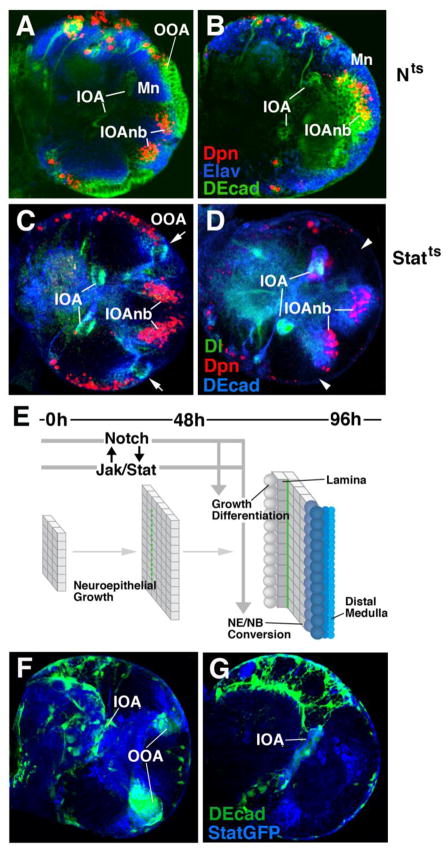Figure 7.
Temporal requirement of Notch and Stat signaling in optic lobe development. (A–D) Frontal confocal sections of late third instar brains (equivalent of 96h at 25°C) mutant for Nts (A, B) and Statts (C, D). In panels of the left, larvae were raised at the restrictive temperature from hatching until 48h later; in right panels, larvae grew at the restrictive temperature between 48h and 96h. (E) Timeline and schematic depiction of Notch/Stat function in optic lobe development. Despite their expression from early larval stages onward, Notch and Stat activity are only indispensable during the second half of the larval period, coinciding with the NE-NB conversion of the OOA. Thus, only late heat treatment caused noticeable abnormal phenotype, consisting of loss of epithelial OOA (arrowheads in D) and superficial position of medulla neurons (Mn in A, B). Peak expression of Delta, seen in narrow band along fringe of IOA and OOA in wild type or early heat-treated Stat-ts mutant (C; arrows) is only found in the IOA in late heat-treated Stat-ts (D), suggesting a requirement of Stat activity for maintaining high Dl levels. Conversely, as shown in panels F and G, persistent Notch activity is required to maintain Stat in the OOA (F: wild-type expression of Stat92EGFP reporter; G: Stat92EGFP reporter in optic lobe where Notch activity was inhibited by an esgGal4> Su(H)DN).
Bar: 40mm

